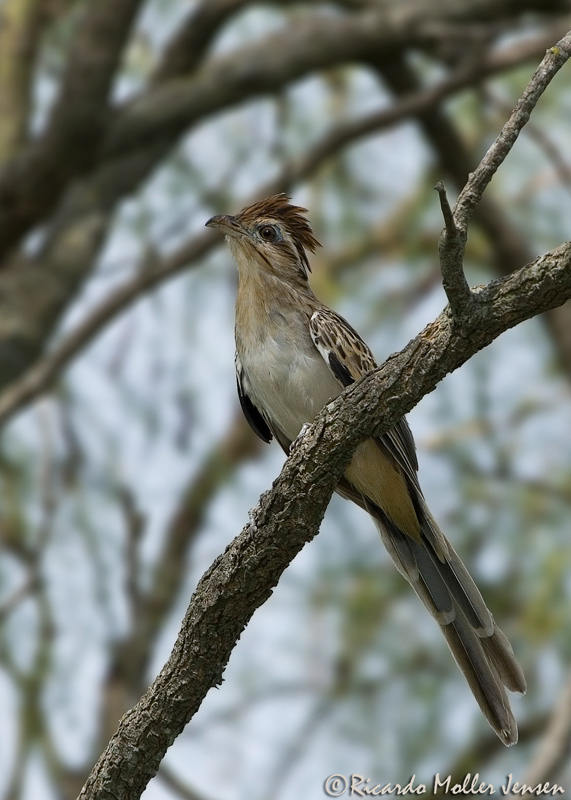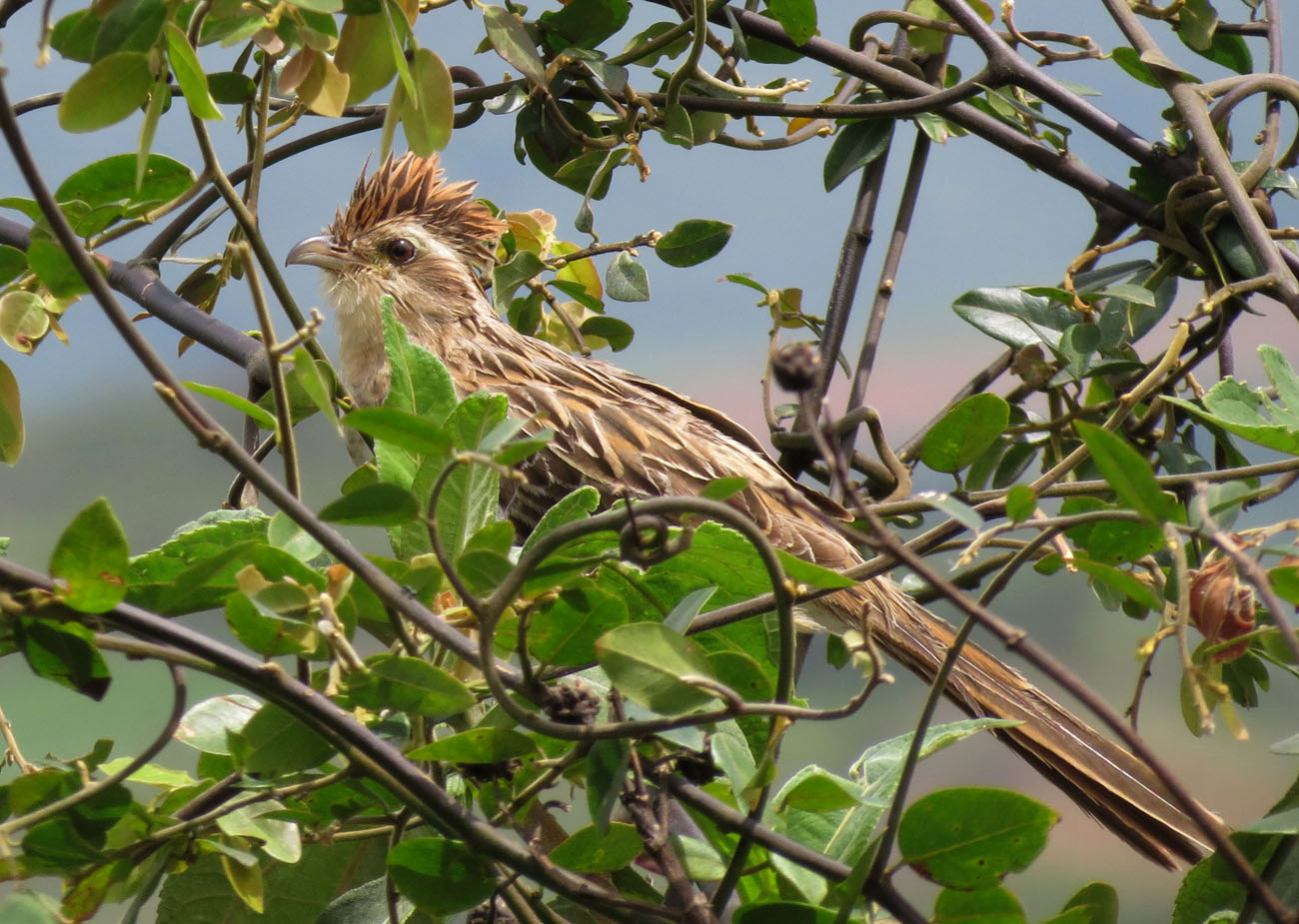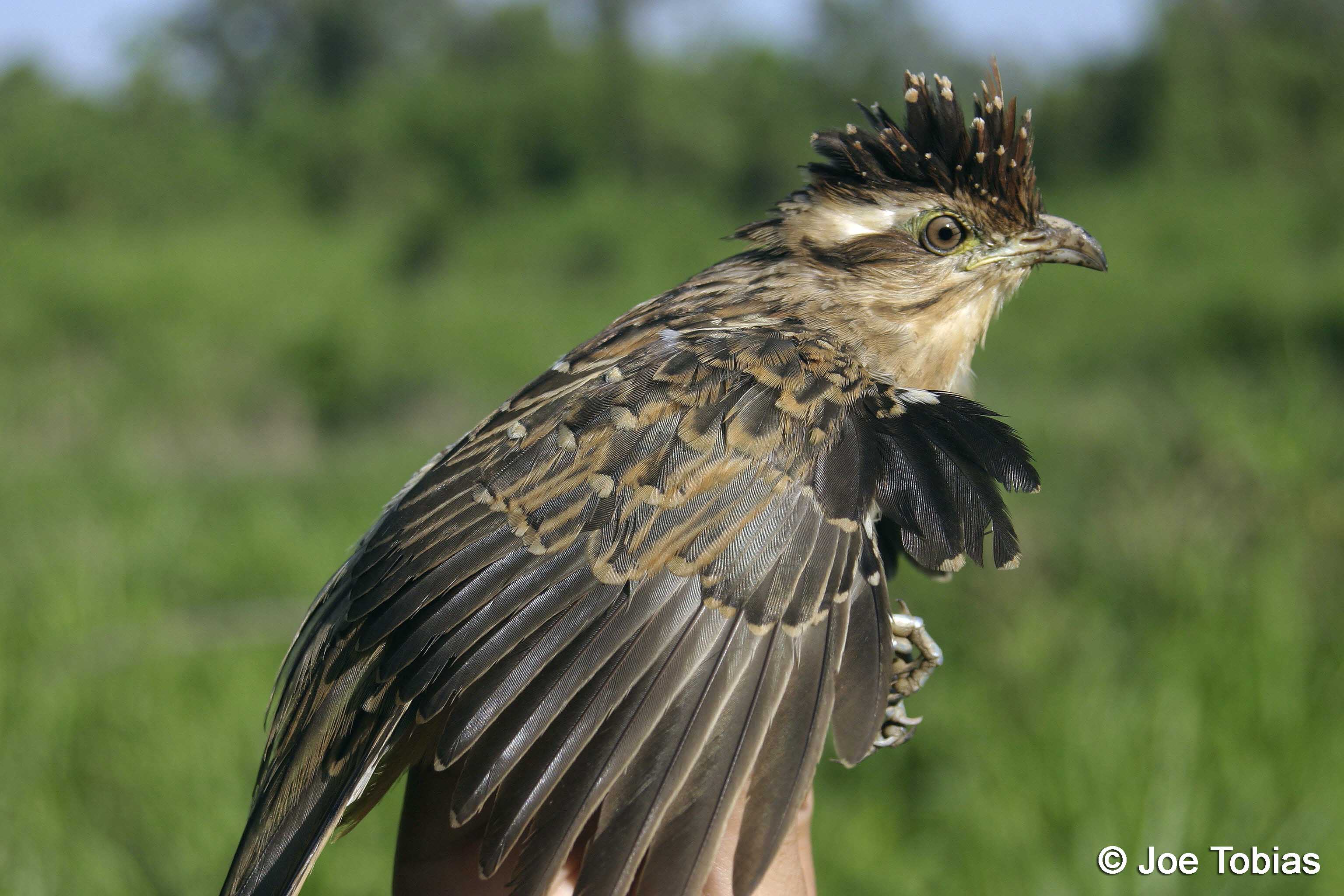
Tapera naevia
SUBFAMILY
Neomorphinae
TAXONOMY
Cuculus naevius Linnaeus, 1766, Cayenne. Two subspecies recognized.
OTHER COMMON NAMES
French: Gйocoucou tachetй; German: Streinfenkuckuck; Spanish:
Cuclillo Crespнn.
PHYSICAL CHARACTERISTICS
10.2–11.4 in (26–29 cm), 0.10 lb (52 g). Brown above, head
with striped black and rufous crest, prominent black alula,
white below with black streaks in throat and chest. Bare skin
around eye yellow, iris brown to green, bill brown.
DISTRIBUTION
Southern Mexico to Panama, Colombia, Ecuador, North Peru,
Brazil, Bolivia, Paraguay, and Argentina.
HABITAT
Scrub, grassland, open country with scattered trees and bushes.
BEHAVIOR
Shy and solitary; song with 3–5 whistled notes, “pee, pee, pee,
peedee,”; conspicuous when singing from a post or wire. Resident,
except in Argentina, seasonal.
FEEDING ECOLOGY AND DIET
Forages on vegetation and on the ground; insects, especially
grasshoppers and caterpillars.
REPRODUCTIVE BIOLOGY
Brood parasitic; hosts with covered nests, such as wrens, flycatchers,
and sparrows. Nestlings use their sharp bill to kill
host chicks; fledge in 18 days.
CONSERVATION STATUS
Not threatened, common to uncommon, expanding in Central
America and Brazil.
SIGNIFICANCE TO HUMANS
None known.
Other popular Animals
Photo Gallery of - American striped cuckoo




 Animalia Life
Animalia Life